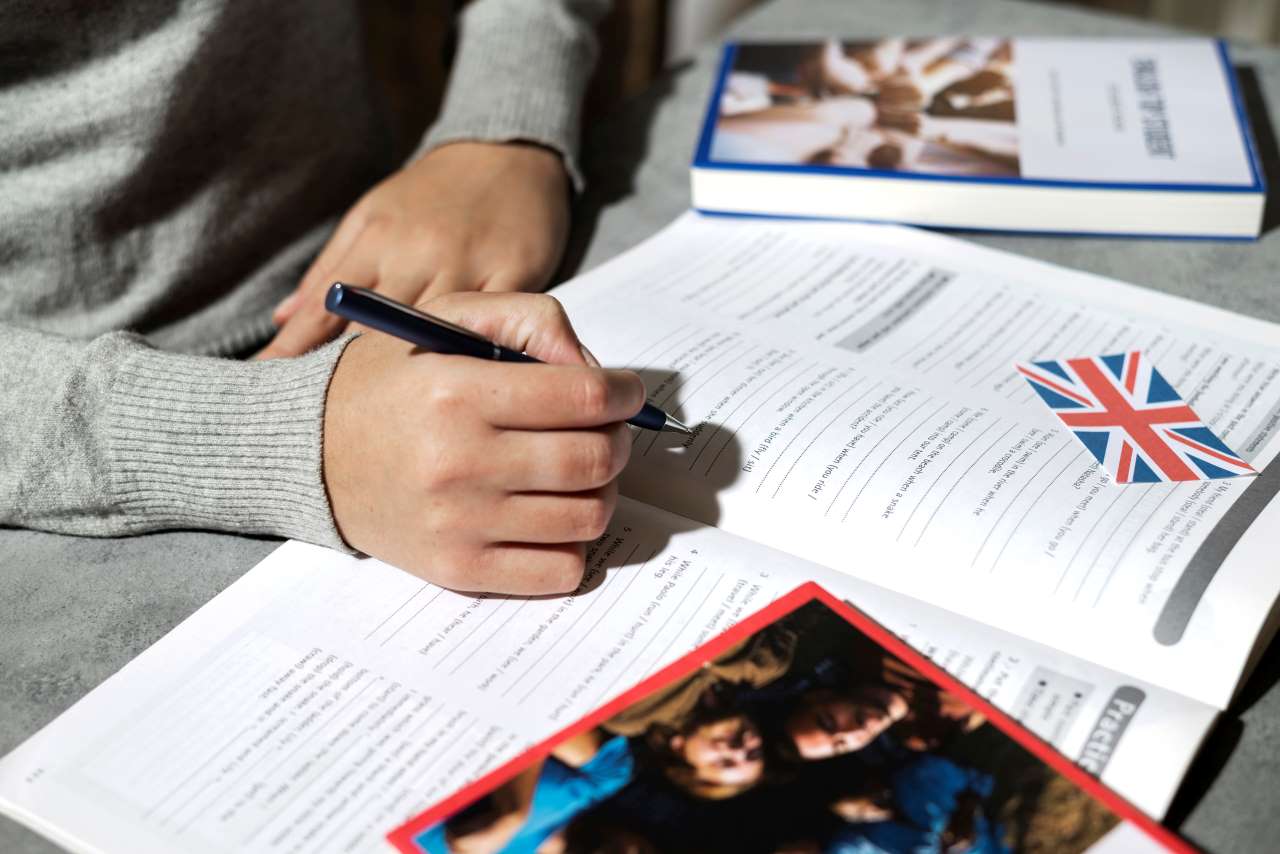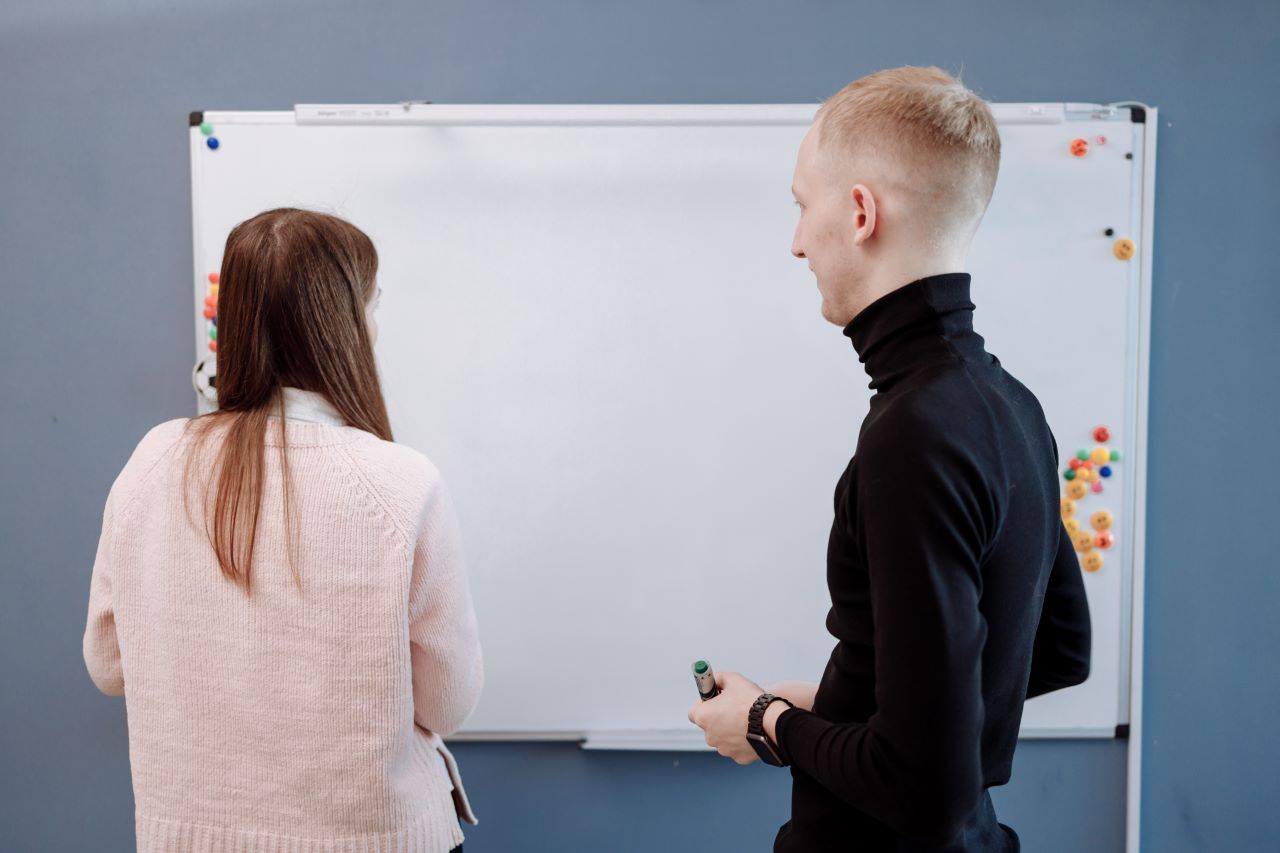Pasiva impersonal en inglés: La Guía MÁS Completa
Una de las estructuras gramaticales más usadas en inglés es la voz pasiva, conocida también como pasiva impersonal, que se usa para centrar la atención en la acción sin especificar quién la realiza.
A pesar de que en un primer momento puede parecer una parte complicada de la gramática inglesa, no lo es en absoluto y en el momento en que la domines, ¡sonarás como un auténtico nativo! Sigue leyendo porque en este artículo te contamos todas sus claves.
¿Cuándo se utiliza la pasiva impersonal?
En inglés, la pasiva impersonal se utiliza o bien cuando no se conoce el sujeto de la acción, o bien cuando este es obvio o irrelevante. Esto se da principalmente cuando nos referimos a aquello que “se dice”, “se cree”, “se piensa” y “se conoce”.
Si nos fijamos en la frase en voz activa: People know that she is a good teacher (“La gente sabe que es una buena profesora”) suena mucho más natural si la ponemos en pasiva: It is known that she is a good teacher (“Se sabe que es una buena profesora”).
Lo mismo ocurre con: The police arrested two thieves (“La policía arrestó a dos ladrones”) y Two thieves were arrested (“Dos ladrones fueron arrestados”). En este caso, no hace falta señalar quién protagoniza la acción porque quien arresta es la policía, es decir, es una información obvia.
Otros ejemplos de uso de la pasiva serían los siguientes:
- Información sobre el clima: It will be raining tomorrow (“Mañana estará lloviendo”).
- Declaraciones generales: It is said that laughter is the best medicine (“Se dice que la risa es la mejor medicina”).
- Instrucciones o reglas: It is required that all students complete their homework (“Se requiere que todos los estudiantes completen sus deberes”).
- Titulares de noticias: It was discovered a new species of fish (“Se ha descubierto una nueva especie de pez”).
¿Cómo se forma la pasiva impersonal en inglés?
En líneas generales, en inglés, la voz pasiva o pasiva impersonal se forma de la siguiente manera:
OBJETO DE LA FRASE ACTIVA + V. TO BE CONJUGADO EN EL TIEMPO DEL VERBO DE LA FRASE ACTIVA + PAST PARTICIPLE [+ BY + SUJETO DE LA FRASE ACTIVA]
Ejemplo:
- Activa: Scientists discovered a cure for cancer.
- Pasiva: A cure for cancer was discovered [by scientists].
La parte de la frase precedida por la preposición by es opcional cuando se trata de información irrelevante u obvia, como en este caso o el que hemos puesto anteriormente con la policía.
Cuando queremos utilizar las formas “se dice”, “se cree”, “se piensa”, etc. para convertir una oración compuesta en voz activa a pasiva impersonal, se puede hacer de dos maneras: o bien empleando “It” como sujeto, o bien usando el sujeto de la oración subordinada como sujeto de la pasiva. ¡Veámoslo!

Uso de it como sujeto de la pasiva
Esta forma es la más simple para transformar una oración compuesta activa a la pasiva impersonal:
IT + V. TO BE CONJUGADO + PAST PARTICIPLE DEL VERBO INTRODUCTORIO (TO SAY, TO BELIEVE, TO THINK…) + [THAT] RESTO DE LA FRASE.
Ejemplos:
- PRESENTE:
- A: They say that Tom owns a restaurant. (“Dicen que tiene un restaurante”).
- P: It is said [that] Tom owns a restaurant. (“Se dice que tiene un restaurante”).
- PASADO:
- A: They believed that Earth was the center of the Universe. (“Creían que la Tierra era el centro del Universo”).
- P: It was believed [that] Earth was the center of the Universe. (“Se creía que la Tierra era el centro del Universo”).
- FUTURO:
- A: They will think that we were irresponsible people. (“Pensarán que fuimos gente irresponsable”).
- P: It will be thought [that] we were irresponsible people. (“Se pensará que fuimos gente irresponsable”).
Uso del sujeto de la oración subordinada como sujeto de la oración pasiva
Hasta ahora, hemos visto que la formación de la voz pasiva en inglés no es muy diferente a cómo lo hacemos en castellano. Sin embargo, al enfrentarnos a las oraciones compuestas subordinadas, observaremos una diferencia fundamental, pues a parte de poder utilizar la estructura que terminamos de ver utilizando “It”, se puede usar como sujeto de la pasiva el de la oración subordinada.
De esta manera la estructura de la pasiva sería la siguiente:
SUJETO DE LA ORACIÓN SUBORDINADA + PASIVA DEL VERBO INTRODUCTORIO (V. TO BE + PAST PARTICIPLE DEL AUXILIAR) + TO + VERBO PRINCIPAL.
Veámoslo con las frases de los ejemplos anteriores:
- La oración en voz activa They say that Tom owns a restaurant puede convertirse a pasiva de dos formas:
- Tal como lo hemos hecho anteriormente: It is said Tom owns a restaurant.
- O bien, utilizando el sujeto de la oración subordinada: Tom is said to own a restaurant.
- A: They believed that Earth was the center of the Universe.
- P: Earth was believed to be the center of the Universe.
- A: They will think that Sam and John were irresponsible people.
- Sam and John will be thought to have been irresponsible people.
Si te fijas en la última frase, tiene un elemento diferente respecto a las anteriores: el verbo de la frase subordinada, en lugar de dejarse en infinitivo se ha conjugado con la forma “have + past participle” para expresar que en el futuro a Sam y a John se les considerará haber sido personas irresponsables en el pasado.
Para que lo tengas más claro aquí tienes una pequeña guía de cómo conjugar el segundo verbo para adaptarlo al sentido de presente, pasado o futuro que le quieras dar, independientemente del tiempo del verbo introductorio en voz pasiva (to say, to think, to believe…):
SUJETO + V. INTRODUCTORIO EN PASIVA + TO…
- + INFINITIVO (si es present simple):
- Greg is said to bake cakes (Se dice que Greg hornea tartas).
- + BE + -ING (si es present continuous):
- Greg is said to be baking cakes (Se dice que Greg está horneando tartas).
- + HAVE + PAST PARTICIPLE (si es past simple o present perfect):
- Greg is said to have baked cakes (Se dice que Greg horneó / ha horneado tartas).
- + HAVE BEEN + -ING (si es past continuous o present perfect continuous):
- Greg is said to have been baking cakes (Se dice que Greg ha estado / estuvo horneando tartas).
- + BE + -ING / BE GOING TO + INFINITIVO (si es un tiempo del futuro):
- Greg is said to be going to bake cakes (Se dice que Greg horneará tartas).
Como Podemos observar, esta construcción no existe en castellano, sin embargo, en inglés, si las frases pueden construirse de las dos maneras, la más común es esta segunda. Así que no queda otro remedio que practicar.

Errores más comunes en las pasivas impersonales
A la hora de formar oraciones en forma de pasiva impersonal, muchos de los estudiantes cometen errores debido a una traducción literal del castellano o a una confusión en los tiempos verbales. Veamos los más frecuentes:
- Confundirse con el tiempo del verbo introductorio cuando el segundo se refiere al pasado o al futuro. Por ejemplo, en la frase: Everybody say that Nick travelled a lot last year, la pasiva de say sería is said, porque “se dice” en el presente, a pesar de que la segunda parte de la frase esté en pasado. Si dijésemos was said, se traduciría como “se decía” o “se dijo”.
- Confundirse con el posible cambio de número del sujeto al transformar la frase activa en pasiva impersonal. Por ejemplo, en la frase: People think that Sam is a good chess player, el sujeto people es plural, mientras que en la forma pasiva: Sam is thought to be a good chess player, o bien It is said that Sam is thought to be a good chess player, en ambos casos el sujeto (Sam/It) está en singular.
- Confundirse con los tiempos verbales después del “to”. Después de esta preposición, el verbo solamente puede ir en infinitivo. Por ejemplo, en la frase Nick is said to have travelled a lot last year, indicamos que nos referimos al pasado con la forma HAVE + PAST PARTICIPLE y no conjugando “travel” en pasado.
- Olvidarse del verbo auxiliar “to be” al traducir directamente del español sin tener en cuenta la estructura de la pasiva en inglés.
- Intentar traducir de forma literal, dando lugar a construcciones que no corresponden al idioma al que se traduce.
Es importante tener en cuenta estas diferencias y practicar activamente la formación de frases en voz pasiva para evitar estos errores comunes.
Ejercicios de la pasiva impersonal en inglés
Aquí tienes algunos ejercicios para practicar la estructura de la voz pasiva en inglés, con diferentes tiempos verbales. En cada ejercicio encontrarás un enunciado con un hueco que debes rellenar con la forma correcta del verbo indicado entre paréntesis.
Present simple:
- The books __________ (read) by students in this class.
- The dishes __________ (wash) by the restaurant staff.
- The news __________ (broadcast) on television every evening.
- The rooms __________ (clean) by the hotel staff daily.
- The emails __________ (send) by the secretary.
Past simple:
- The car __________ (repair) by a mechanic last week.
- The letter __________ (write) by my friend yesterday.
- The windows __________ (clean) by me on Saturday.
- The concert __________ (attend) by thousands of fans.
- The house __________ (paint) by a professional painter.
Futuro (will):
- The tickets __________ (buy) by us tomorrow.
- The cake __________ (make) by my mom for my birthday.
- The report __________ (submit) by the team next week.
- The meeting __________ (schedule) for Friday.
- The problem __________ (solve) by an expert.
Correcciones:
- The books are read by students in this class.
- The dishes are washed by the restaurant staff.
- The news is broadcast on television every evening.
- The rooms are cleaned by the hotel staff daily.
- The emails are sent by the secretary.
- The car was repaired by a mechanic last week.
- The letter was written by my friend yesterday.
- The windows were cleaned by me on Saturday.
- The concert was attended by thousands of fans.
- The house was painted by a professional painter.
- The tickets will be bought by us tomorrow.
- The cake will be made by my mom for my birthday.
- The report will be submitted by the team next week.
- The meeting will be scheduled for Friday.
- The problem will be solved by an expert.
A continuación, tienes algunos ejercicios para practicar el cambio de voz activa a voz pasiva en inglés utilizando diferentes tiempos verbales. En cada ejercicio, encontrarás una oración en voz activa que debes cambiar a voz pasiva impersonal.
- They say that she is a talented singer.
- People think that he can speak multiple languages.
- Everyone knows that they won the championship.
- It is said that the company will launch a new product.
- People believe that the movie was based on a true story.
- They say that she won the competition.
- People think that he stole the money.
- Everyone knows that they built the bridge.
- It is said that the meeting will be held tomorrow.
- People believe that the painting was created by a famous artist.
Correcciones:
- It is said that she is a talented singer.
- It is thought that he can speak multiple languages.
- It is known that they won the championship.
- It is said that a new product will be launched by the company.
- It is believed that the movie was based on a true story.
- They say that she won the competition.
- People think that he stole the money.
- Everyone knows that they built the bridge.
- It is said that the meeting will be held tomorrow.
- People believe that the painting was created by a famous artist.

